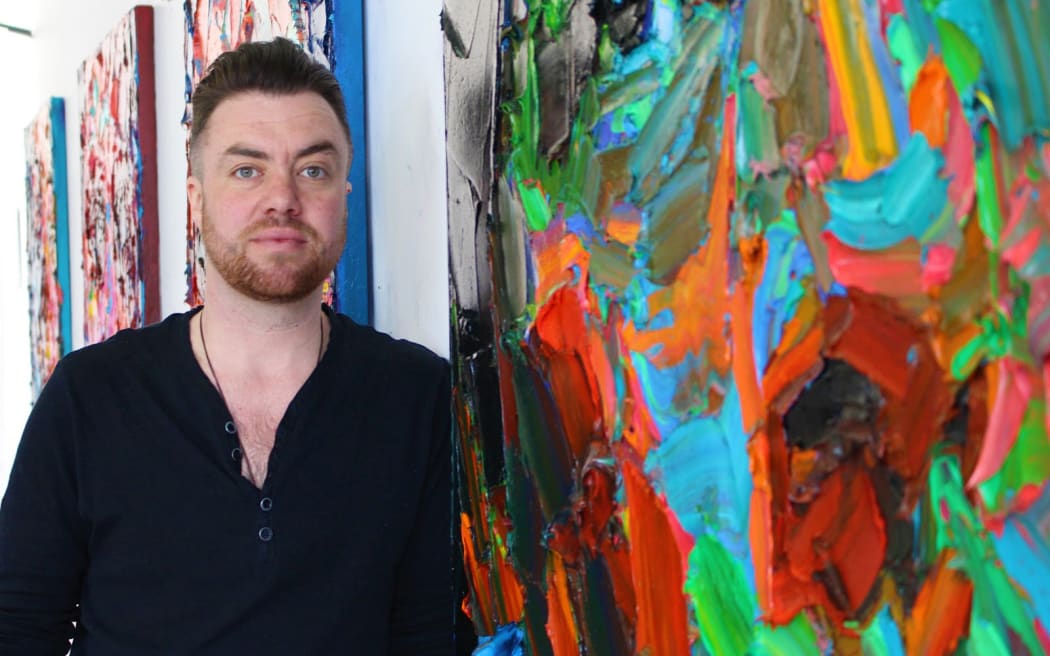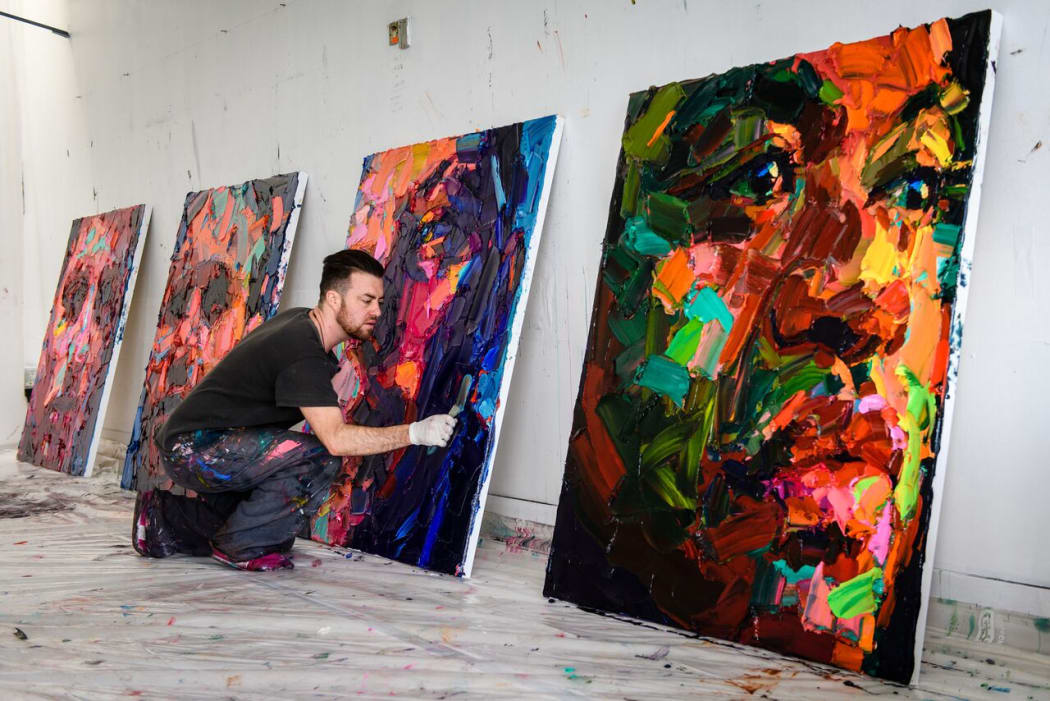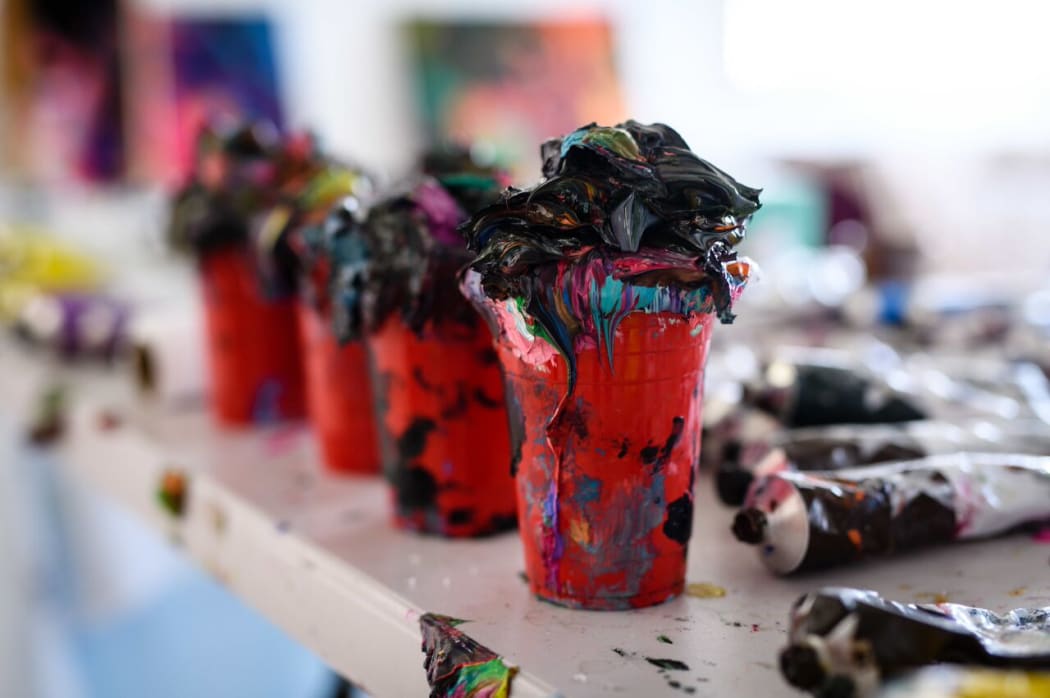"It’s just with distance you get that clarity,” says artist Jack Trolove.

Jack Trolove Photo: Callum Roberts
In an old air force base on Wellington’s Shelly Bay peninsula, artist Jack Trolove welcomed the public inside his studio for the first time.
His art is striking, emotional but not always political, and he said that’s OK.
Trolove has been creating art for almost 20 years now. When he’s not painting, he works within the LGBTI community to promote good mental health.
The 38-year-old spent five years working with the Mental Health Foundation in a suicide prevention role.
These days he’s working with youth groups like Arataiohi and Rainbow Youth to teach others how to work with young LGTBI people and become equipped to talk about what he calls “tricky stuff”.
He likened his art and day job to having two lives, but said there was plenty of crossover in his creative and community work. Like the importance of visual language and the part it played in promoting mental health.
But there came a point where Trovlove needed to separate the two.
“I was making work for quite a while that had a big agenda around social change and I was really wanting my art to do a lot of that.
“I just hit a point where I actually think I’m more effective working towards that stuff through NGO work or not-for-profits; actually working in that community sector.”
The distinction allowed his art to progress naturally. In doing so, Trolove realised more and more that it’s all connected anyway.
“It’s not a separate thing, but I feel since making those decisions [my art] has been able to lean into the poetry of it more.”
He said his art and other interests may cross over again in the future, noting artists he loved often made strong political work.
“My work goes into that space and then comes out. If I’m doing that community work, it sort of gives myself permission to move in and out and still feel alright about it.”

Trolove's studio in Wellington's Shelly Bay. Photo: Callum Roberts
Trolove’s art is made to be seen up close and from afar. His pieces have a different effect depending on the viewer’s proximity.
Up close, the paintings are abstract. But stepping back reveals a face, often one in a moment of intense emotion.
“That’s one of the things that I’m interested in. When you’re looking at them up close, it’s just an abstract painting. Texture, colour. But it’s not until you get back from the painting that the shape comes out.”
He realised the same can be said for moments in life that were emotionally intense.
“You know in our own lives when we’re close to something, often we can’t really tell what’s going on. It’s just with distance you get that clarity.”
Recently his painting had become “super-sculptural,” applying thick swathes of paint on canvas and shaping it with knives.
“It almost feels more like carving paint rather than painting it on.”
He held a piece side-on, revealing thick layers of paint. “You can see on the side how sculptural that is, it actually weighs a tonne.”
Because his art did not use traditional methods of layering, the paintings needed to come together quickly before any paint dried.
Trolove compared his thick painting style to stretching skin, allowing him to shape the faces by physically digging into the piece.
Not all his art made it on display. In the corner of the studio was a desk where mounds of dried paint sat on in overflowing cups. “These are all the paintings that didn’t work,” he said.
“You just have to scrape the whole thing off and usually have a little bit of a cry.”
The studio space was formerly the officer’s mess. Trolove learned recently he had a family connection with it.
“I found out that my grandad, who was a pilot in the Air Force, used to come over here, literally in this room, and have fancy meals. That felt like a really nice connection.”

Trolove's paints. Photo: Callum Roberts
Trolove spoke about what it felt like to open his studio up to the public. Exposure was often the hardest part of being creative.
“Paint doesn’t dry by heat, it oxidises, so it has to have exposure. That’s like the creative world too. It’s like you have to have the terror to exposing yourself to air.”
Trolove’s work will be on show at Whitespace in Auckland until 22 October.

